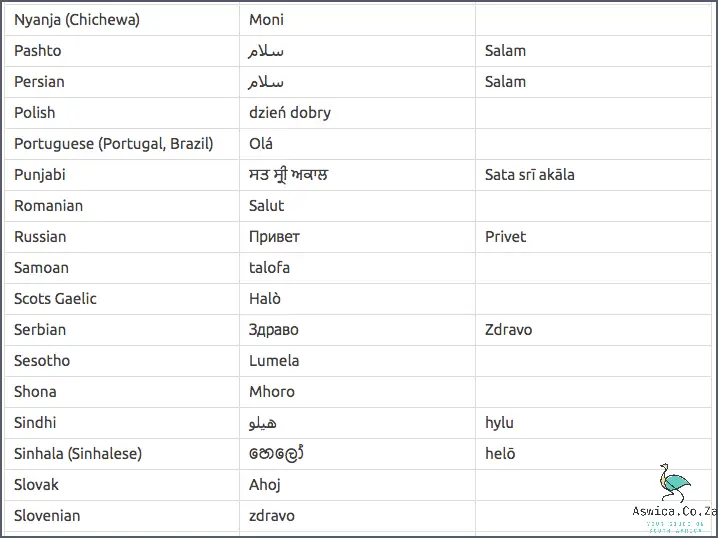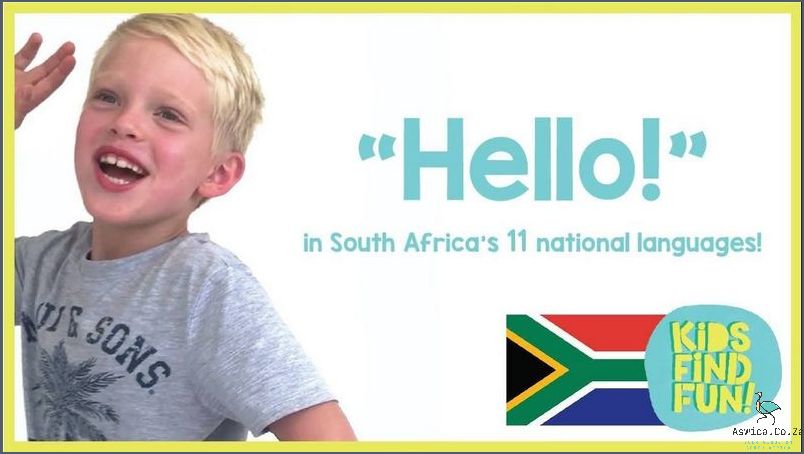
Hi In Every Language is a website that teaches users how to say hello in different languages. The website has a variety of greetings in different languages, including English, Spanish, French, German, Italian, and Portuguese. The website also includes a pronunciation guide for each language.
Contents
Hi In Every Language
Hi is one of the most widely used words in the world. It is a universal way of greeting others, no matter what language you speak. Hi can be translated into different languages, such as Hola in Spanish, Ciao in Italian, Bonjour in French, Ni Hao in Chinese, and Konnichiwa in Japanese. Even in languages that don’t have a direct translation for the word ‘hi’, there is generally an equivalent expression for it. Hi is a great way to start a conversation and make someone feel welcomed in any language. It is a great way to bring people together, no matter what language they speak.
History of Greeting in Different Cultures
Greetings are an essential part of social etiquette, regardless of culture or language. The history of greetings is as varied as the cultures that use them, and the manner in which they are expressed can vary from polite to brusque. But no matter the language or location, the purpose of a greeting is to convey a sense of goodwill and connection.
In the Western world, the most common form of greeting is a handshake. This is believed to have originated in 5th century BC Greece, as a sign of peace and goodwill. It’s thought that the handshake was a way to present oneself unarmed and show that the person had no weapon in their hand. Today, handshakes are used as a gesture of greeting and a sign of trust.
In some cultures, a bow is the preferred form of greeting. This practice is thought to have originated in feudal Japan and is still used in many Asian countries, such as China and Thailand. Bowing is seen as a sign of respect and humility, and can be used to express deference or gratitude.

In some Islamic countries, it is customary to say “As-salamu alaykum” (“Peace be upon you”) when greeting someone. This is seen as a blessing and is a way to express respect and goodwill.
In most European countries, the traditional greeting is the kiss on the cheek. This practice is believed to have originated in the Middle Ages and is still used in many countries today. It is a gesture of friendliness and affection, and is a way to convey warmth and familiarity.
In some parts of India, the traditional greeting is “Namaste”. This is a Sanskrit word that roughly translates to “I bow to you”. This is usually accompanied by the pressing of the hands together in a prayer-like gesture and a slight bow. It is seen as a sign of respect and humility.
No matter the language or culture, the purpose of a greeting is to express goodwill and connection. While the manner in which a greeting is expressed may vary from culture to culture, the sentiment behind it remains the same.
Examples of Greeting Phrases in Different Languages
Greetings are a common form of communication across all cultures. They provide a way to establish a connection, show respect, and acknowledge someone’s presence. While the meaning remains the same, how people express their greetings vary greatly from one language to another. From the hearty “bok” in Croatian to the formal “selamat” in Bahasa Indonesian, here are some examples of common greeting phrases in different languages.
In Spanish, the most common way to greet someone is with an enthusiastic “Hola!” (Hello!). This is usually followed by a hug, a handshake, or a kiss on the cheek. For more formal occasions, people might use the phrase “Buenos días” (Good day). Another common phrase is “Buenas tardes” (Good afternoon).
In French, the most common way to greet someone is with the phrase “Bonjour” (Hello). This phrase is used in both formal and informal situations. For a more formal greeting, people may use the phrase “Salut” (Hi). To greet someone who is leaving, the phrase “Au revoir” (Goodbye) is used.

In German, the most common way to greet someone is with the phrase “Guten Tag” (Good day). This phrase is used in both formal and informal situations. For a more formal greeting, people may use the phrase “Grüß Gott” (Greetings). To greet someone who is leaving, the phrase “Auf Wiedersehen” (Goodbye) is used.
In Italian, the most common way to greet someone is with the phrase “Ciao” (Hello). This phrase is used in both formal and informal situations. For a more formal greeting, people may use the phrase “Buongiorno” (Good day). To greet someone who is leaving, the phrase “Arrivederci” (Goodbye) is used.
In Portuguese, the most common way to greet someone is with the phrase “Olá” (Hello). This phrase is used in both formal and informal situations. For a more formal greeting, people may use the phrase “Bom dia” (Good day). To greet someone who is leaving, the phrase “Adeus” (Goodbye) is used.
In Russian, the most common way to greet someone is with the phrase “Zdravstvuyte” (Hello). This phrase is used in both formal and informal situations. For a more formal greeting, people may use the phrase “Dobry den” (Good day). To greet someone who is leaving, the phrase “Do svidaniya” (Goodbye) is used.
In Japanese, the most common way to greet someone is with the phrase “Konnichiwa” (Hello). This phrase is used in both formal and informal situations. For a more formal greeting, people may use the phrase “Ohayo gozaimasu” (Good morning). To greet someone who is leaving, the phrase “Sayonara” (Goodbye) is used.
These are just a few examples of common greeting phrases in different languages. Regardless of language, these phrases are a great way to show respect and kindness to someone. So, the next time you travel to a foreign country, don’t forget to greet people like a local!
Practical Ways of Learning Greeting Phrases in Different Languages

Greeting phrases are an essential part of communication, especially when travelling and exploring different cultures. We may have heard of the standard ‘hello’ or ‘goodbye’ in different languages, but there is a world of other phrases out there that can really make a conversation more meaningful. Learning these phrases can be a great way to connect with people and build a connection with a new culture. Here are some practical ways to learn greeting phrases in different languages.
1. Start with the basics. Before jumping into more complex phrases, it’s important to get the basics down. Start with the basics like ‘hello’, ‘goodbye’, ‘please’, and ‘thank you’. These are the words that you will use the most and will get you off to a great start.
2. Listen to native speakers. Listening to native speakers is the best way to pick up on the pronunciation and cadence of a language. Listening to native speakers can also help you with other aspects of the language, such as grammar and structure.
3. Use online resources. There are many online resources that can help you learn the basics of a language. Many of these websites and apps offer audio clips of native speakers, which can help you with pronunciation. Additionally, many of these resources provide detailed explanations of the words and phrases that you are learning.
4. Practice with friends. Once you have a few phrases down, try practicing with friends. This is a great way to get used to using the phrases in real-life conversations. Additionally, your friends may have some helpful tips and tricks that can help you get the most out of your language learning experience.
5. Take a class. Taking a class is a great way to learn a language in-depth. Not only will you be able to learn the basics and more complex phrases, but you will also have the opportunity to practice with other students. Additionally, classes are led by experienced teachers who can provide valuable insights into the language.
Learning greeting phrases in different languages can be a great way to explore new cultures and make connections with people around the world. With a few practical steps, you can learn these phrases and start having meaningful conversations with people from all over the globe.
Conclusion
It’s amazing how many different ways there are to say "hi" in different languages. It’s a great way to learn about other cultures and to connect with people from all over the world.



